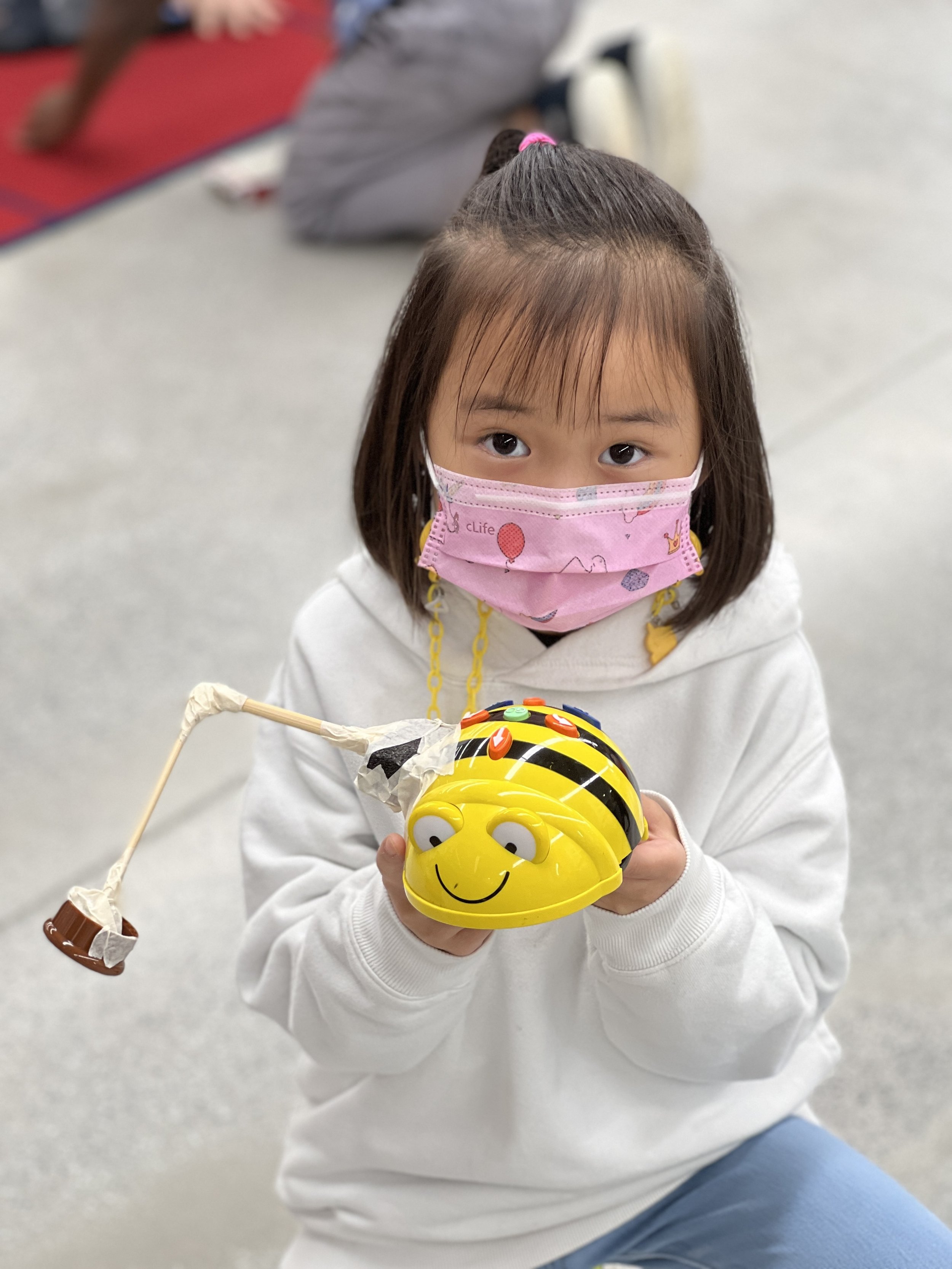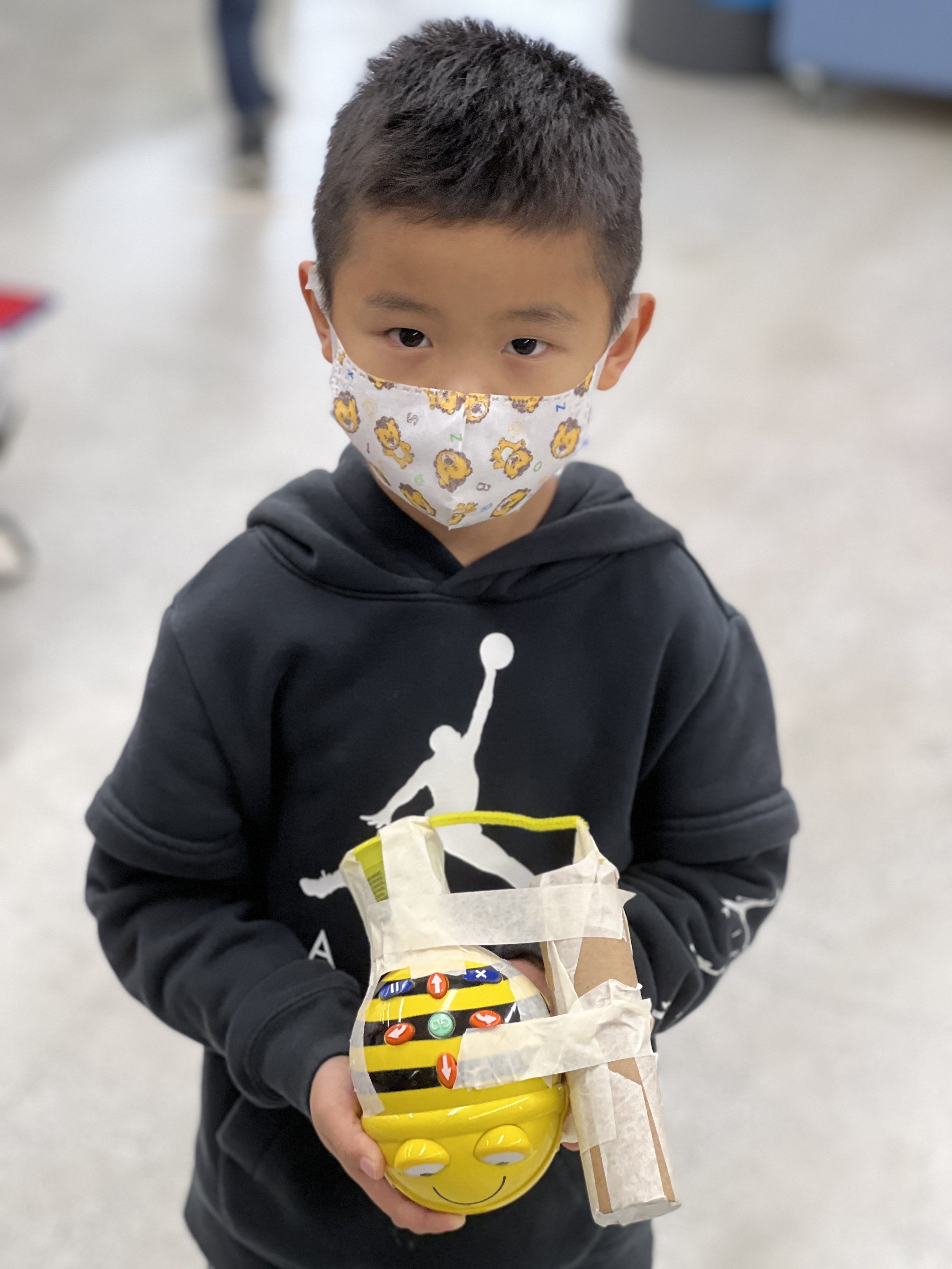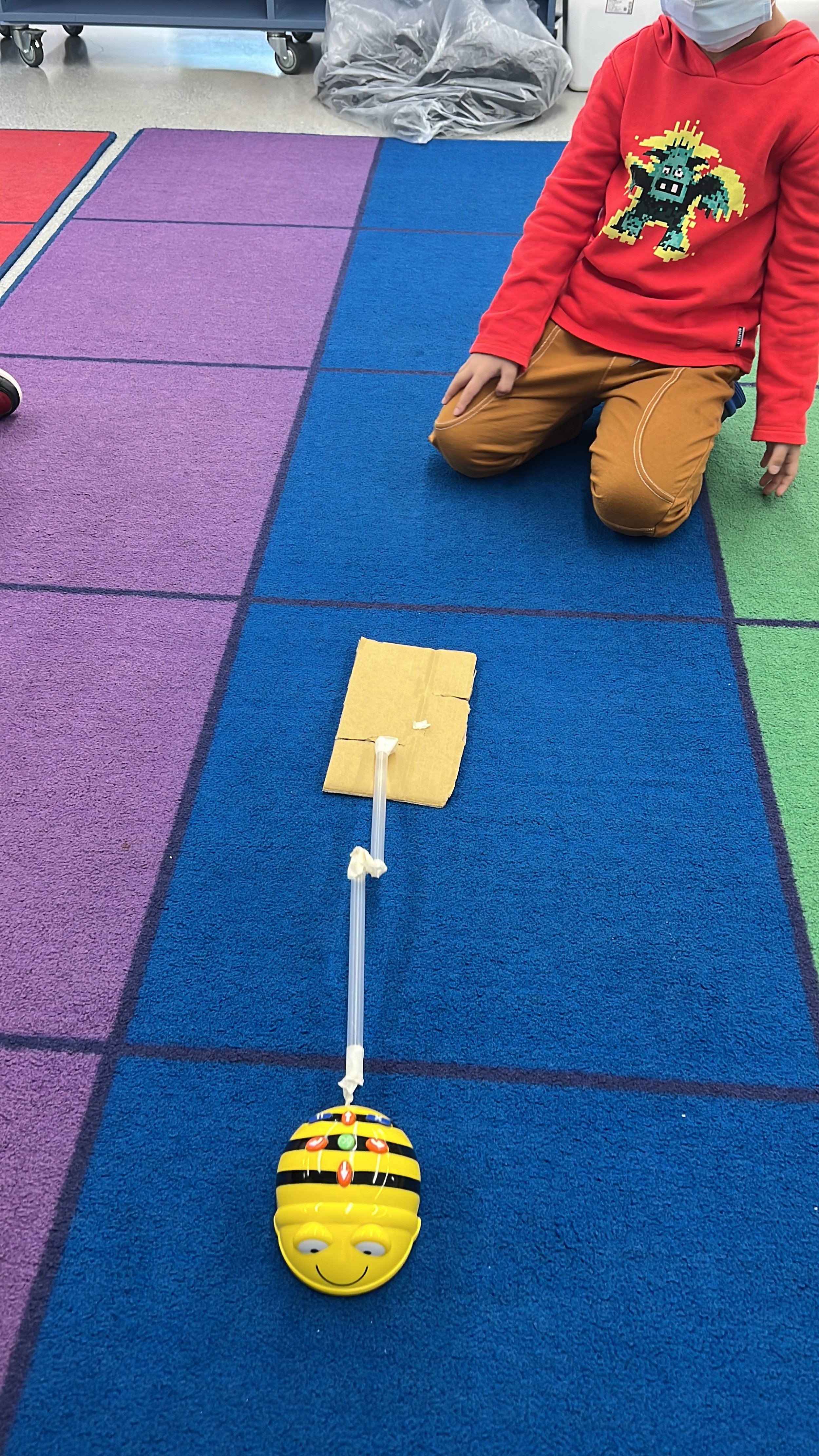Designing with Empathy
Taipei American School has made a commitment toward growing and fostering a culture of Justice, Equity, Diversity, and Inclusion (JEDI) in our community. You can read more about our TAS community commitment here. The work that we have been doing with anti-bias education has brought about a new layer of reflection upon the way I teach, the words I use, and how I can help myself and my students grow. They say it is an ongoing journey and it really is, both in my personal life and professional life. This post shares one project that I have recently adapted to help my kindergarten students design with empathy.
What is it like to be a Beebot?
I have always done a design challenge involving the Beebot in kindergarten. For many years I did a Beebot elevator challenge where I would set the problem for the children: The Beebot cannot walk up stairs like you and I, so we need to design an elevator to help it get to higher places.
In rethinking this project with more of a “JEDI” lens, I thought about two things:
Giving the students more choice and autonomy in their designs
Allowing the students to first better understand and gain perspective on what it might be like to live our day-to-day lives as a Beebot (building empathy).
In the first part of this project, I brought a wheelchair into my classroom, and we talked about how the Beebot had wheels, not legs as we did. We then looked at things we wanted to try doing around the school in a wheelchair to gain a sense of how this might be different than the way we normally move around and perform tasks. Students in each class decided what questions they had about using a wheelchair, here is an example:
We then went around school trying out the various tasks that the students were wondering about and documenting each of them. Every student got to try one task.
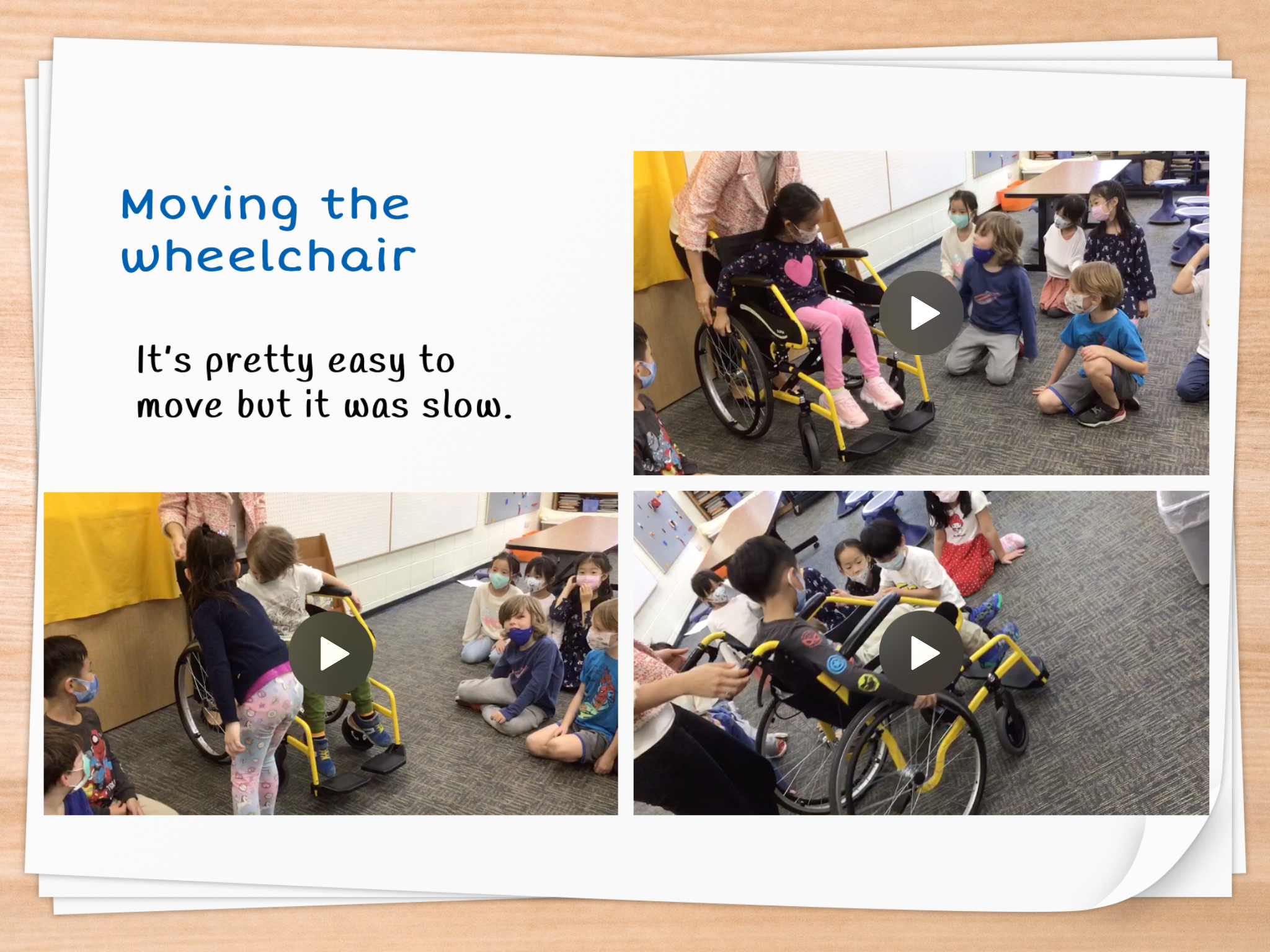
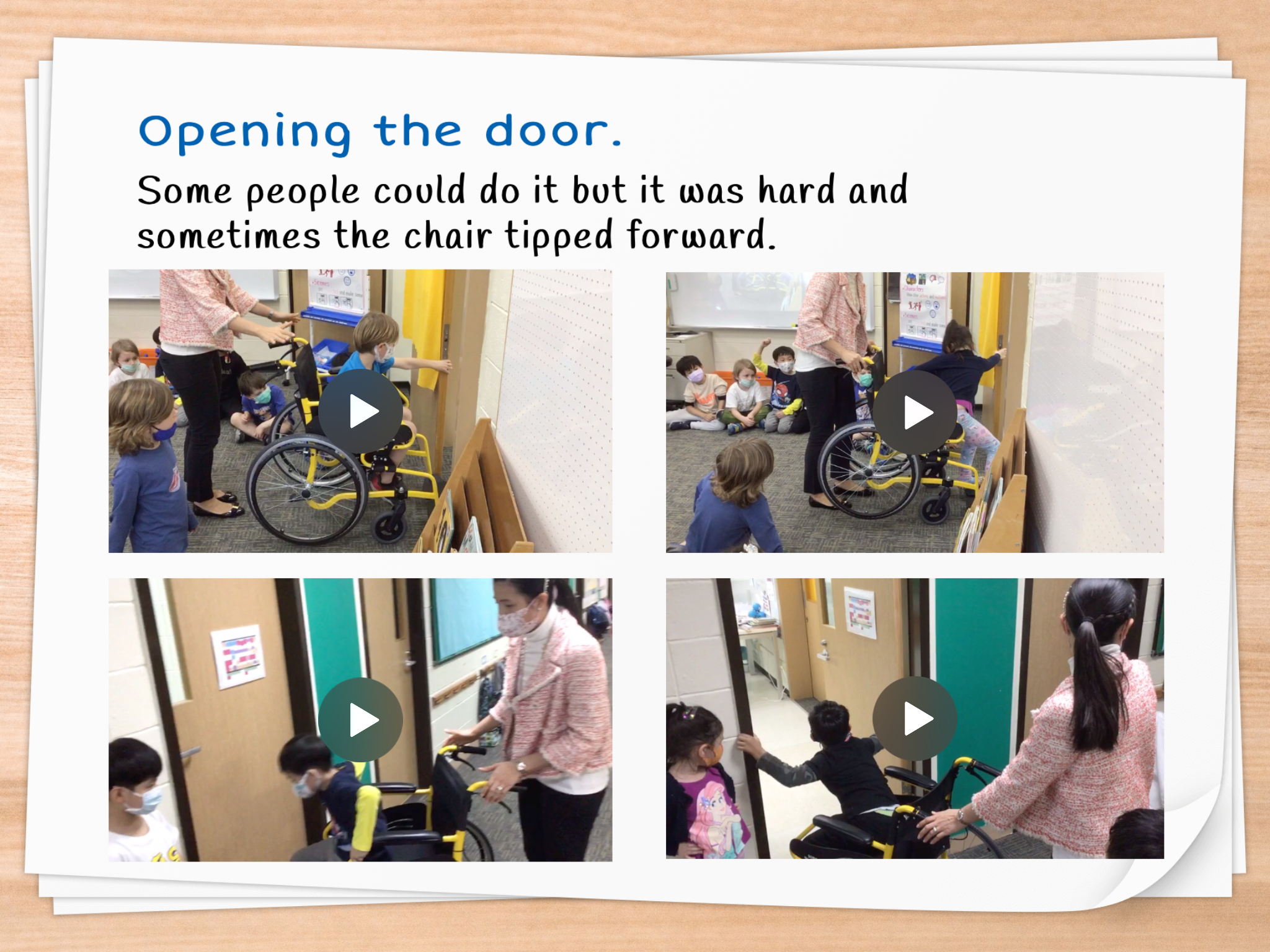
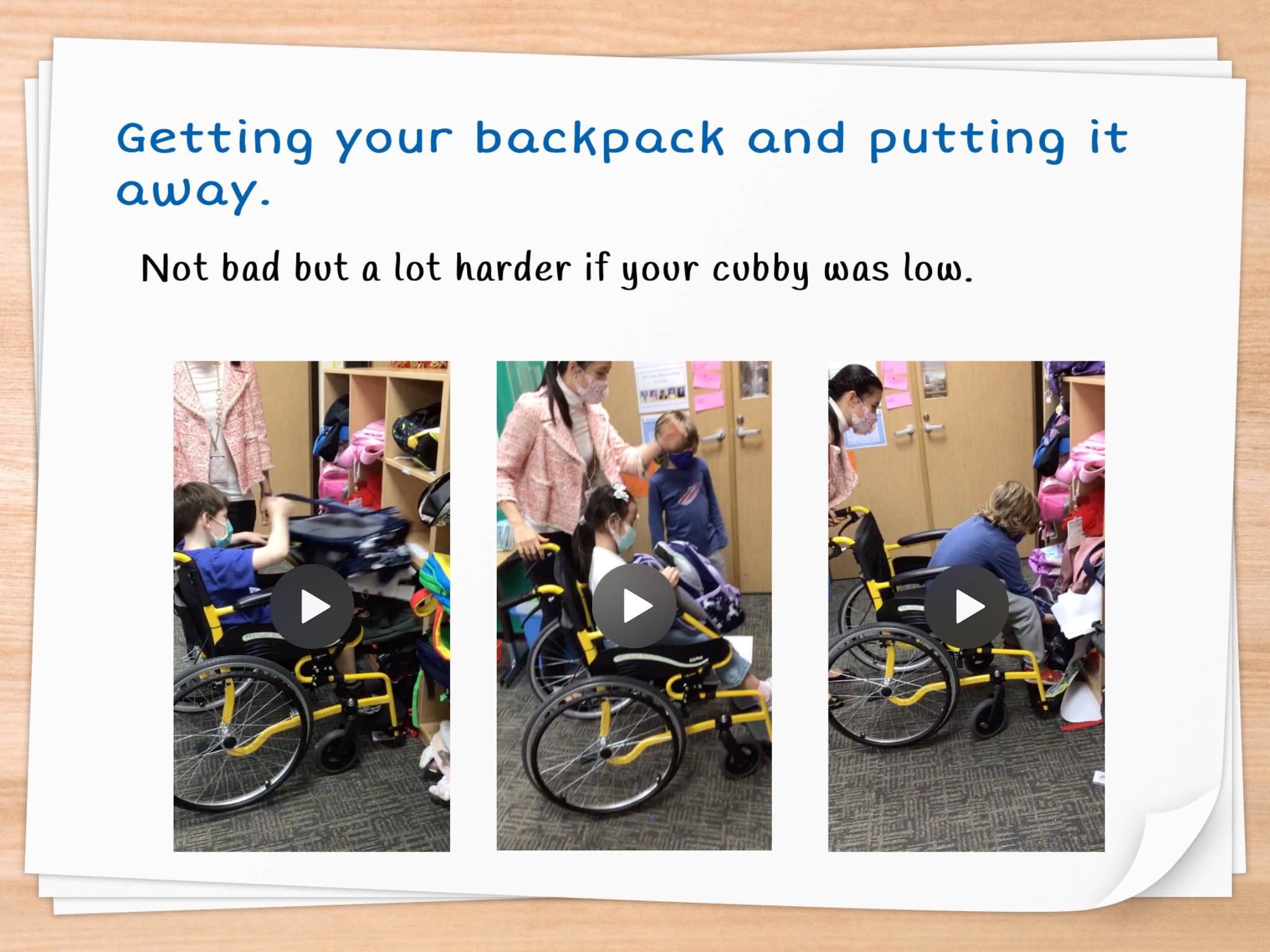
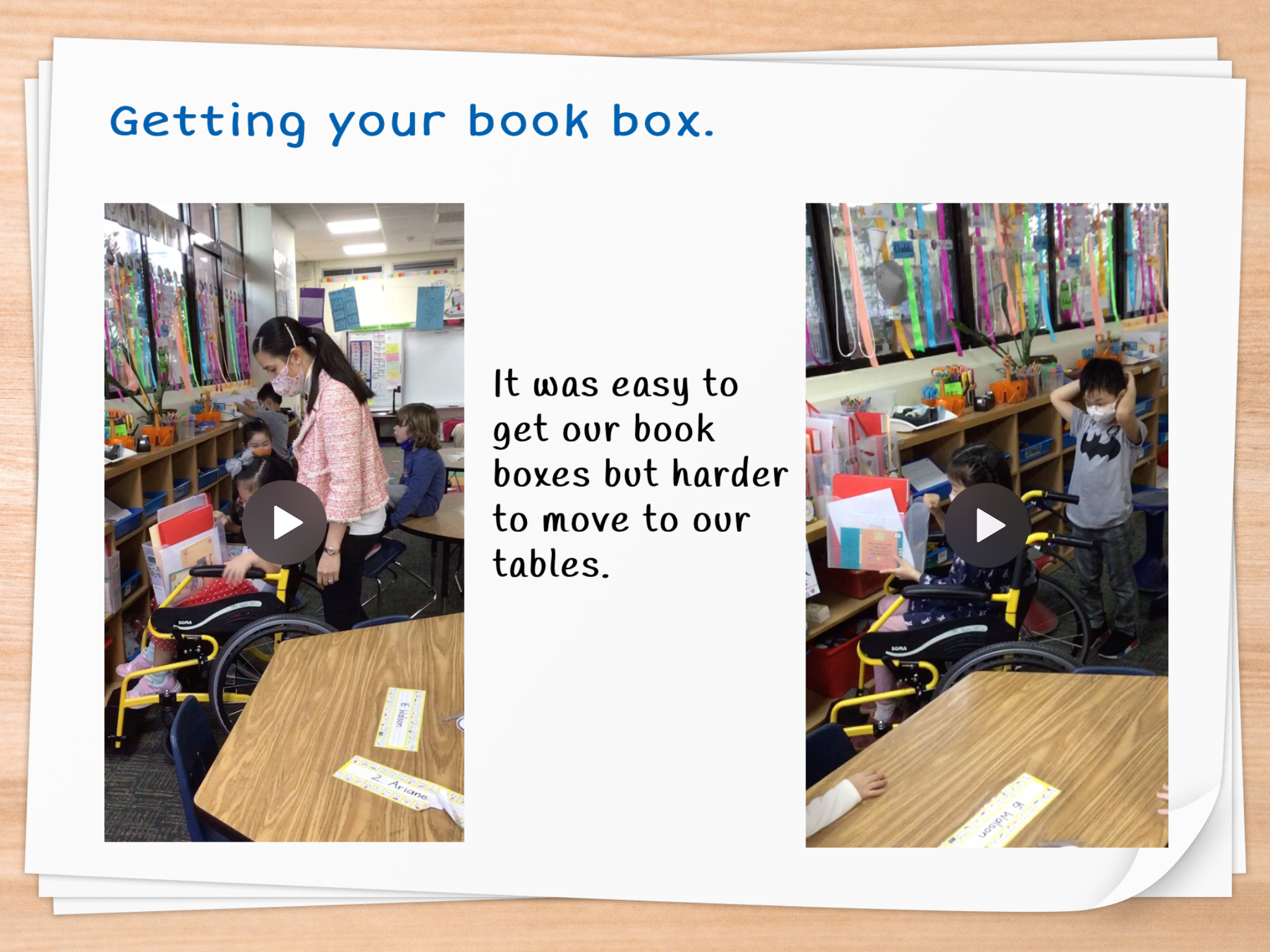
The documentation was put together in Book Creator and posted on Seesaw. Here is one example of a class book:
Engineering Solutions
In the following STEAM session, students were reminded of the research they conducted and each child had to choose a problem that the Beebot might have performing daily tasks. Their job was to engineer a solution to this problem. Most of the kids chose one of these problems:
Opening a door
Carrying things around (back pack, water bottle, etc.)
Holding a pencil to write and draw (and ensuring the pencil could be removed when the Beebot didn’t need to write)
Here are some final designs by our students:




